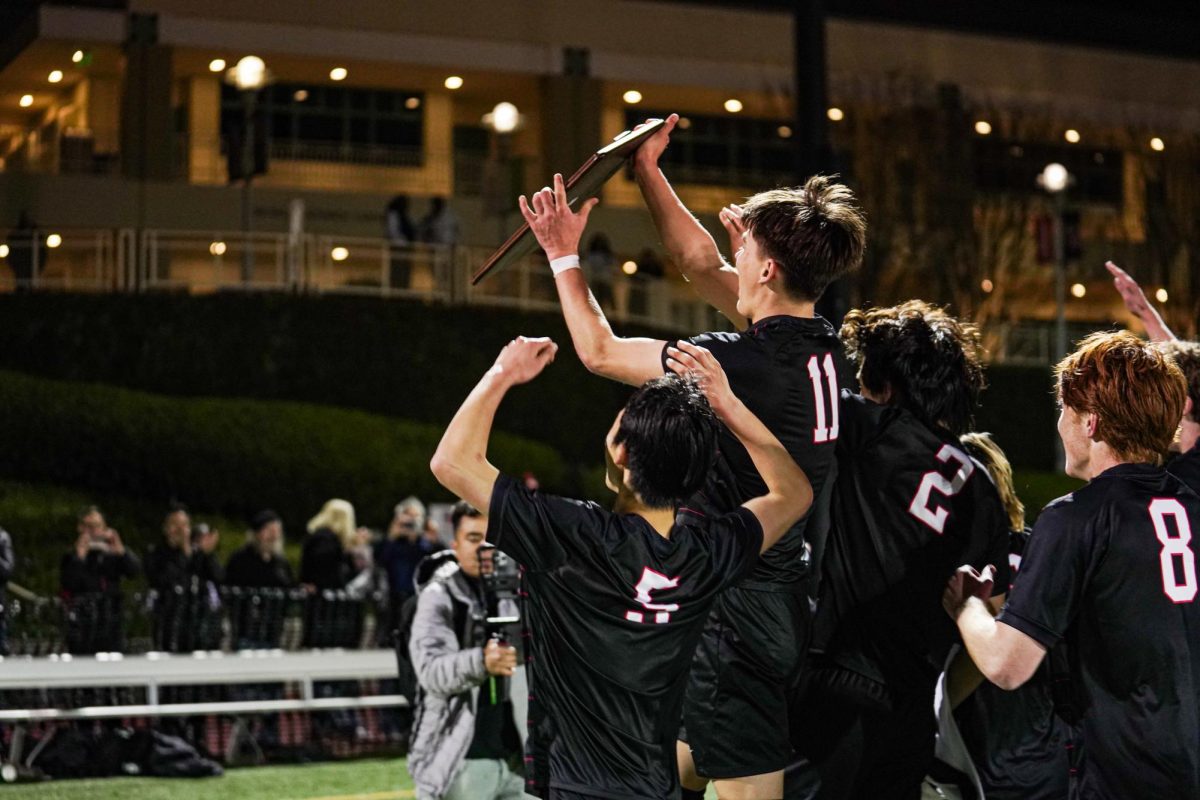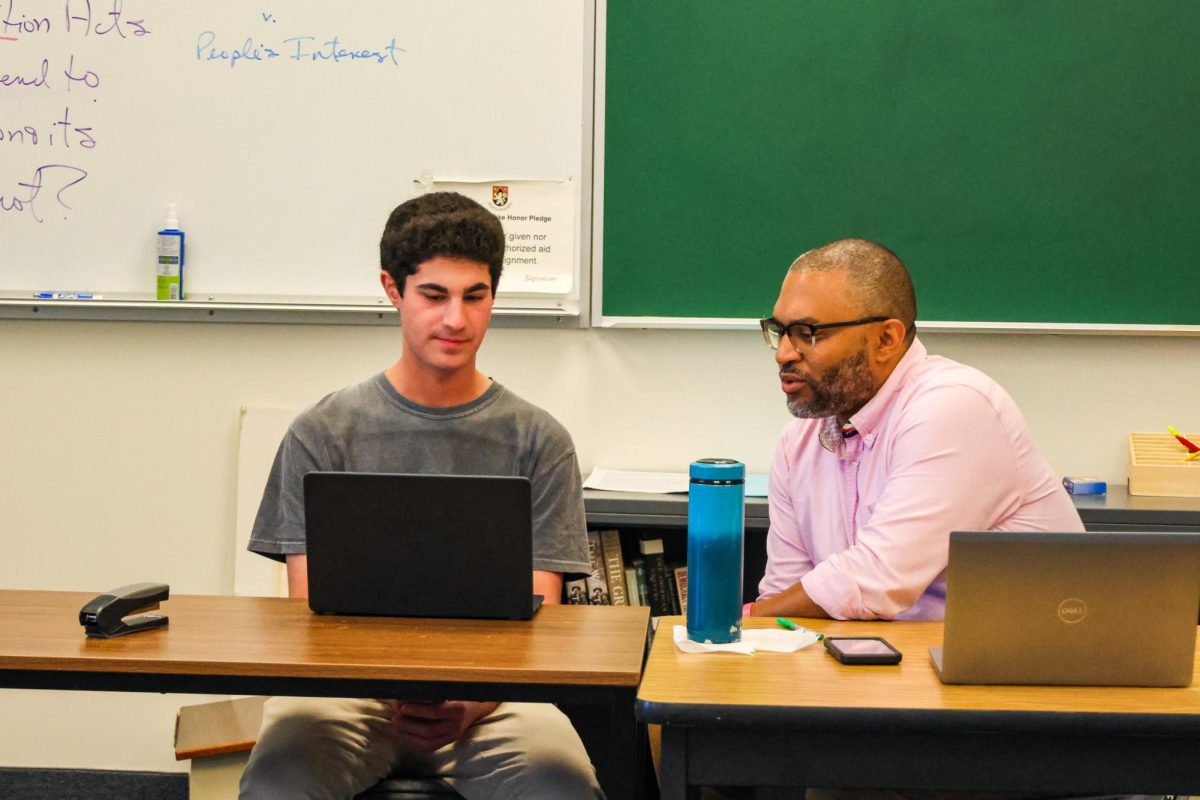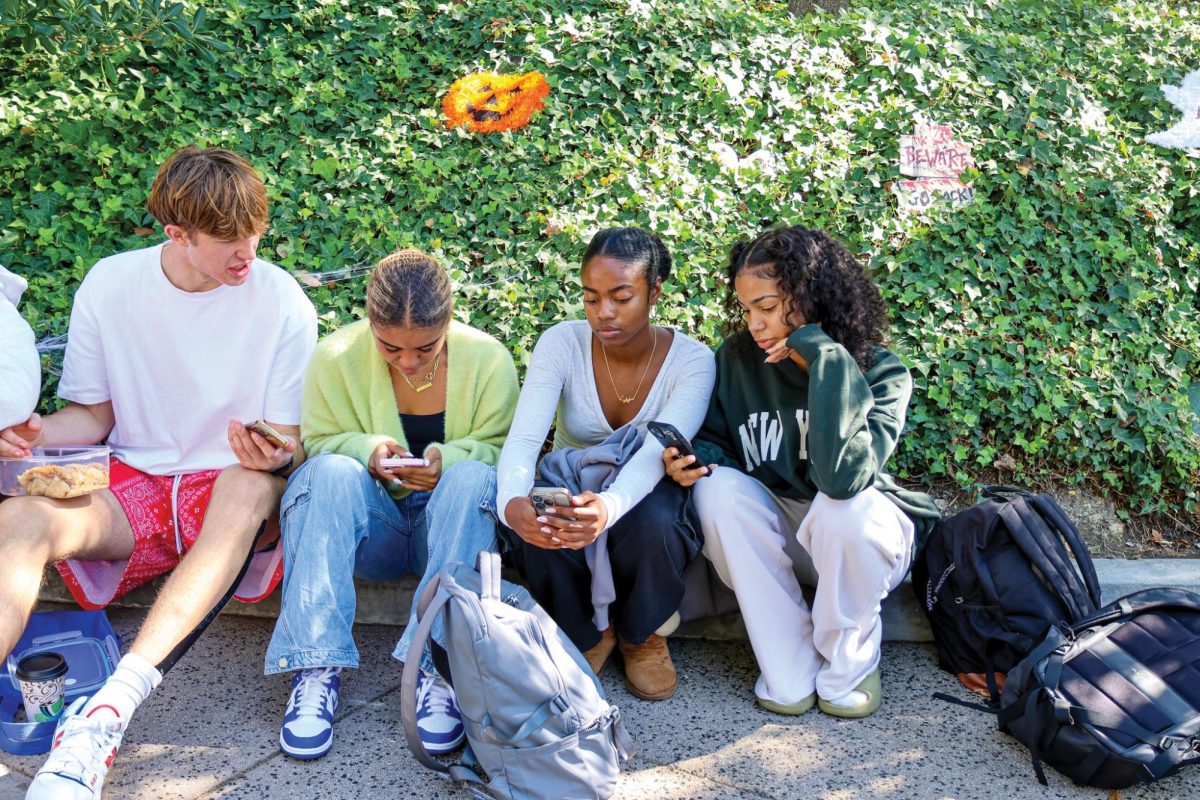On March 13, 2007, the administration suspended two sophomores who sent an email with a “diss tape” they had made that threatened violence and aimed homosexual slurs at other students.
Ten years later, the conversation about students using offensive language on campus and on the Internet remains, most recently seen in the hiring of an Interim Director of Diversity, Equity and Inclusion, Janine Jones, as well as the recent controversy over students using homophobic and racial slurs on social media accounts. When President Rick Commons rewrote the school’s mission statement, he made a conscious effort to include that the school “strives to be a diverse and inclusive community.”
Now, after the February release of the Diversity, Equity and Inclusion Climate Assessment, the school has begun to participate in hiring fairs to help increase diversity among the faculty. Commons went to Philadelphia and Head of Athletics Terry Barnum travelled to Atlanta to attend events with people of color interested in independent schools. Commons hopes that Harvard-Westlake will be the first school in Los Angeles to host one of these fairs, run by an organization called Nemnet Minority Recruitment.
In 2010, according to a Chronicle article, the Western Association of Schools and Colleges/California Association for Independent Schools released a comprehensive self-study detailing examinations of the curriculum, students, faculty, finances and facilities at Harvard-Westlake. The last chapter of the report gave the school an “action plan” for improving five areas between 2010 and 2016, including diversity.
Just a year before, the athletics department recalled cross country jackets after people realized they featured an image commonly known as “the illegal alien sign.”
In 2014, Commons and Head of School Jeanne Huybrechts met with the parent group Parents of African-American Harvard-Westlake School after they heard of some incidents of insensitivity. He said that meeting was one of the factors in deciding to conduct the most recent climate assessment.
“I think the climate assessment is the most — as far as I’m aware — it’s the most thorough investigation of how we as an institution and as a community can be more diverse and inclusive,” Commons said. “I think that change may be more accessible to us now because we’re more aware than we ever have been.”
In 2012, the Chronicle published an article describing faculty demographics that said that the percentages of minority teachers were half that of minority students, and that, at the time, middle school history teacher George Gaskin was the only black full-time classroom teacher. The article also said that the faculty was just under two percent African-American, 10 percent Asian and five percent Hispanic. The Chronicle could not obtain the demographic statistics for this year, but Commons said that he doubts how accurate the numbers would be today. The DEI assessment did say that the diversity of the deans department was one area that the school did well.
“It’s hard to make [the demographic numbers] precise because they depend, of course, on making sure that we are not identifying people but allowing them to identify themselves,” Commons said.
Also in the 2010 accreditation report was a section describing the possibility that if tuition kept increasing at the same rate, fewer families would be able to afford Harvard-Westlake. In the Chronicle article at the time, former Chief Financial Officer and current Business of Life teacher Rob Levin said that the school’s tuition must be adjusted for inflation and that tuition has remained under the local median. In this year’s re-enrollment letter, Chair of the Board of Trustees Philip Holthouse spoke on similar lines. Tuition for the 2017-18 school year is $37,100, a 3.3 percent increase from last year.
“While we believe our program is second-to-none, our tuition will likely remain below the major local independent school median,” Holthouse wrote on Feb. 3.
Roughly 20 percent of students are on financial aid, according to the admissions website. The average grant is around $27,000, though the website said that they can range from a few thousand dollars to almost all of the tuition.
The school does not offer merit or athletic scholarships. In 2013, former President Thomas C. Hudnut attributed an increase in student diversity to an increased commitment to financial aid. He also created the Thomas C. Hudnut Scholar Endowed Fund that allows six students to attend each year, saying at the time that it was essential to make Harvard-Westlake “as affordable for as many as possible.”
In this year’s February issue, a feature story highlighted the extensive costs of participating in certain extracurriculars and trips at Harvard-Westlake, which are not covered under financial aid for some students. Concerns were also brought up in the DEI assessment that students with a lower socioeconomic background may feel out of place at the school.
Concerns were also brought up in the DEI assessment that students with a lower socioeconomic background may feel out of place at the school. In recent Chronicle articles, students described using expensive tutors for standardized tests, giving teachers pricey gifts such as rugs or just having to pay the $115 ticket price to prom.
Upper School Deans Department Head Beth Slattery said that most students on financial aid are on full-pay, though she said that an issue with socioeconomic diversity here is that it’s hard for most to talk about money.
“Class is a really difficult thing for people to feel comfortable talking about because people who are more affluent feel uncomfortable talking about affluence, and kids who don’t have as much don’t feel as comfortable talking about that,” she said. “I personally have talked about it some, just that even working here was sometimes hard when i first got here and i was like ‘my car isn’t as nice as my students,’ and also as a parent here, I worried that that was going to be complicated for my own child in a way that it hasn’t actually ended up being. And so yeah, I don’t know exactly how we make people more aware and conscious of economic privilege.”
Back in 2010, a homophobic and threatening note left in a gay student’s backpack prompted Huybrechts and then Head of Upper School Harry Salamandra to discuss the incident in class meetings, 100 students to attend a Gay Straight Alliance — now called Gender Sexuality Awareness — meeting, and some to call for more inclusive history and English curricula.
Also ten years ago, Andrew Schein ’07 wrote an opinion piece urging the Fanatics to stop chanting “Brokeback Mountain.” That same year, some senior boys created a Facebook group called “Students Against Skinny Jeans” in which some members posted derogatory comments concerning the sexuality of sophomore boys who wore skinny jeans. The school ultimately decided to not punish anyone, according to a Chronicle story, though the Educational Technology Committee formed a policy a few months later that said the school can hold an identifiable Harvard-Westlake student responsible for his or her actions online.
After the most recent slur controversy, GSA Adviser and Chemistry Teacher Nate Cardin said that the club does not necessarily want the administration to implement a speech code.
“We don’t want word policing,” Cardin said. “We want education. We want people to know that there are consequences to certain things that you say.”
A 2016 Chronicle article also described some students who identify as asexual feeling that there is a lack of acceptance of their sexuality on campus. In 2015, GSA’s initiative to create an all-gender restroom caused some backlash from students, with a Chronicle poll at the time saying 33 percent of students opposed the change.
A Big Red opinion piece written in 2014 outlined the stigma around female athletes, citing an incident when an assistant football coach made a derogatory comment about the field hockey team, which was standing just a few feet away.
The athletic department in response worked to make female athletes feel more comfortable at the school, Barnum said at the time, and the football coaches formally apologized to the field hockey team. Last year, the Fanatics were under criticism for not equally promoting both genders. This year a Chronicle article featured the apparent gender imbalance in STEM classes.
“Part of the reason that I dropped out of computer science this year after taking Design & Data Structures Honors last year was because I felt so overwhelmed by the male —female ratio in the class, and it caused a lot of problems for me in terms of my confidence in the class and how comfortable I felt talking,” a senior girl said.
Earlier this year, La Femme held a meeting to address the dress code in response to controversy because of the stricter enforcement of the policy this year in an effort to inform the administration about their differing views.
Though the school may not be where they had hoped in terms of diversity, the situation has improved in recent years, Huybrechts said.
“There was a time when I was in the upper school science department, and I think we, at one year, were maybe down to two women, and it was [science teacher] Wendy Van Norden and me, and we’ve made a serious attempt to bring more women into our upper school science department, and now I think it is near 50/50,” Huybrechts said. “So that is one of many ways that we have tried to become more diverse, just more diverse in sort of all kinds of background, in terms of where we have gone to school, what we have learned, and what we can bring to conversation. So [we are] not just intellectually diverse and then diverse in terms of, you know, race and gender and sexual preference and etcetera.”
Adam Sieff ’07 wrote a story in 2007 urging the Islamic elementary school New Horizons School to consider Harvard-Westlake as a secondary school option to help combat the small amount of Muslims at the school.
By the end of that year, Director of Admissions Elizabeth Gregory announced the first New Horizons student would attend as a seventh grader the next year, though the then principal Nahid Ansari told the Chronicle that Harvard-Westlake’s large Jewish population had previously deterred applicants.
Last November, the Chronicle published a story about student and faculty atheists. In a Chronicle poll for that story, 32 percent of 370 students said they do not believe in God, 38 percent do, and 30 percent are undecided.
There are two chaplains faculty members, Rabbi Feigenson and James Young, who represent different faiths on campus. Each department has also made conscious efforts to not give homework on both Jewish and Christian holidays.
While the school has produced competing political influences and figures such as Breitbart Editor-in-Chief Alexander Marlow ’04 and Mayor Eric Garcetti ’88, some students have raised concerns over how open the campus is to all types of political ideologies, specifically conservative views.
In a March Chronicle poll of 347 respondents, 13 percent of students said they are Republicans, 54 percent said Democrats and roughly 22 percent said they do not have a political affiliation.
Last year in an April Feature, students of different political orientations discussed that they sometimes feel that they need to suppress their political opinions at school.
“I think that our cultural and political climate on campus probably makes it harder for someone on campus with conservative political views to express those views,” Commons said. “And if that’s the case, then we’re not being as inclusive as I aspire to be.”
Both liberal and conservative students voiced concerns, and in November of this year, the Chronicle wrote about alumni’s experiences going to colleges in more conservative atmospheres and the differing reactions to the election in those environments. Another story in November also described how some Donald Trump supporters feel suppressed on campus, while some more liberal students felt the school was not doing enough to generate a sense of togetherness. While some teachers cancelled quizzes or tests to discuss the election, some students were disappointed that other teachers did not address the tension. Other students felt that some teachers’ actions were politically charged.
Commons sent an email to students and parents on Nov. 11, reaffirming the school’s commitment to diversity and inclusion. Interim Head of Upper School Liz Resnick also sent a letter to faculty Nov. 9 to assure all students felt safe, regardless of politics.
The Chronicle also reported in 2012 how some students and teachers have seen liberal views dominate the political climate. In the story, some students and teachers who affiliate themselves with the republican or libertarian parties said they do not feel pressure to keep their views to themselves, though one student
“I think the ideal is that someone should be able to express her political views freely as long as she’s conscious for caring for other people in the process,” Commons said. “That’s the ideal, and I’m not sure we’re there.”
































